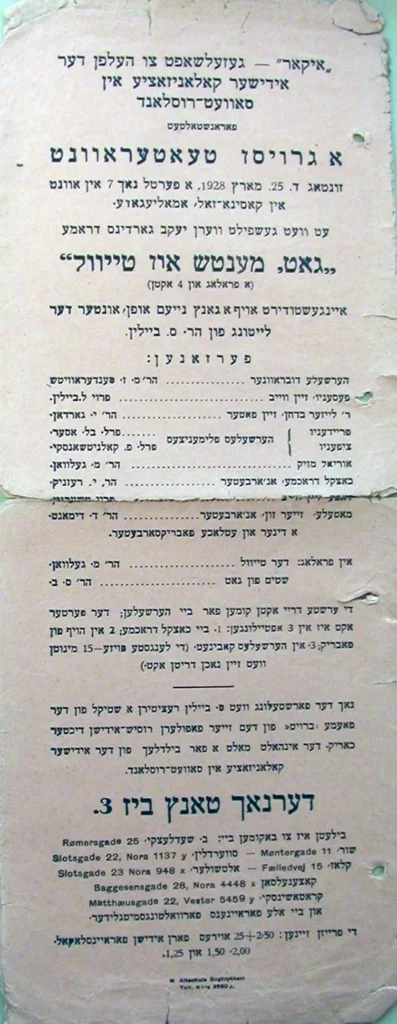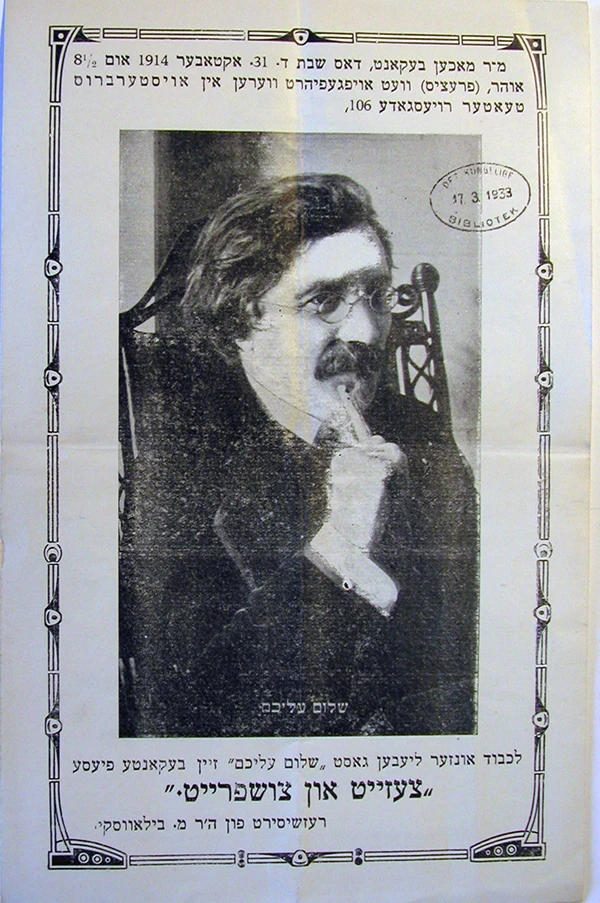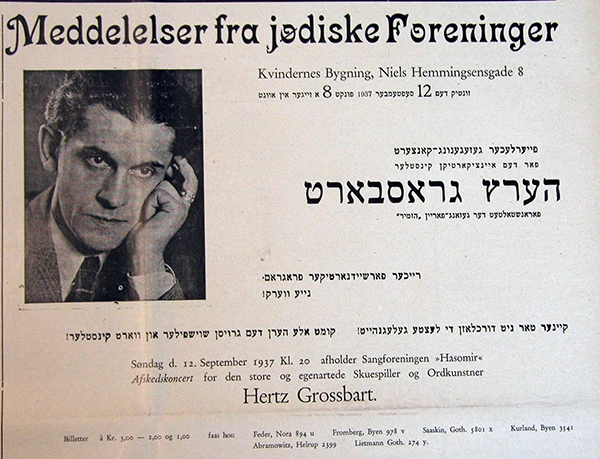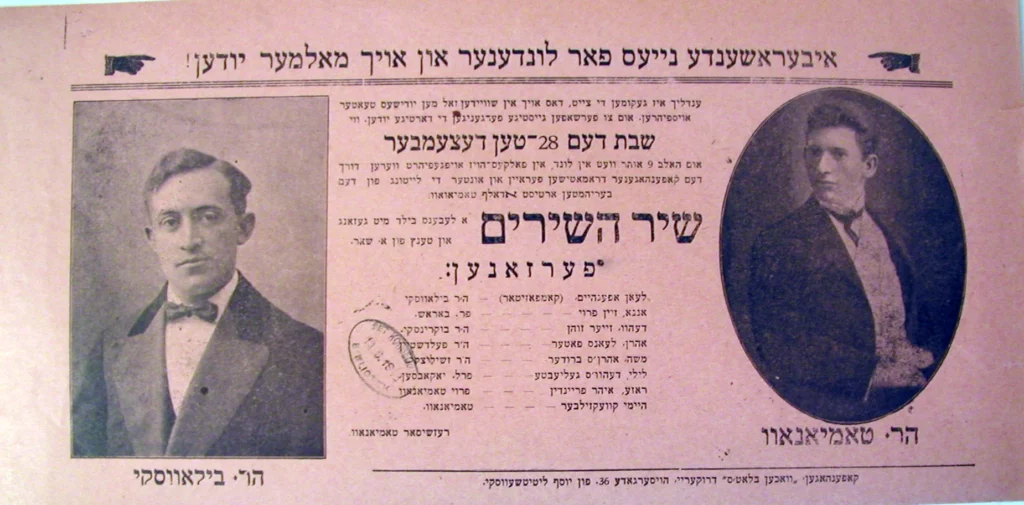Yiddish Theatre in Denmark, 1906-56
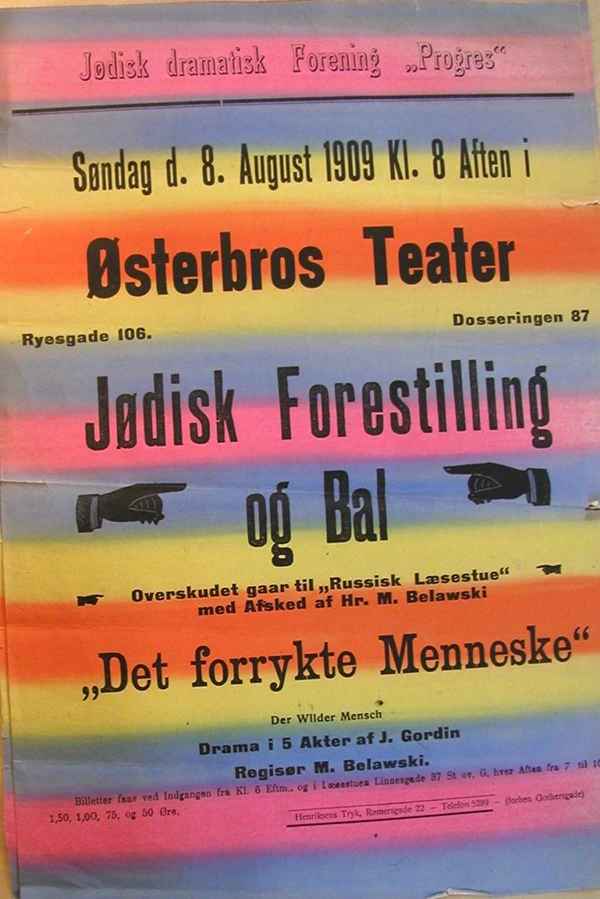
In 1912, a Jewish tailor left Imperial Russia for Denmark. He became a co-founder of the Danish Communist Party, was very active on the Left of the Russian-Jewish immigration, and in 1931, he decided to return to what was now the Soviet Union with his wife and two children. Once there, the tailor’s wife immediately became a member of the Communist Party (CPSU). Her husband did not. They were both arrested during the Great Terror and probably died in 1938 in a prison camp. The children went underground until the political climate changed after the 20th Congress of the CPSU, in 1956. The son returned to Moscow, where he became a teacher of Danish, and successfully applied for his parents’ posthumous rehabilitation.
In 1995, I gave a lecture on this story to a Jewish association in Copenhagen, and after the lecture, a Polish-Jewish immigrant from the 1969-wave asked me why I hadn’t addressed this or that question, or researched this and that subject. My answer was: “Because I can’t read Yiddish.” He said immediately: “I will teach you.”
My maternal grandparents were Russian-Jewish immigrants to Denmark, but I knew little beyond a few words and the melody of their native Yiddish. I studied with my teacher for a year, until his untimely death, and then continued studies on my own. By chance, I met a friend who loaned me a copy of the Yidishe folks-tsaytung (Jewish People’s Newspaper). To my surprise, this Yiddish daily was published in Copenhagen from 1914 until 1915. It turned out to be a very good “textbook” for language study, but better yet was this astonishing story that it contained.
The waves of violence and unrest that rocked early twentieth-century imperial Russia, and the beginning of the First World War, meant that Jewish immigration to Denmark increased greatly between 1905 and 1914. Perhaps 10,000 to 12,000 Jews came Copenhagen, most of them en route to London or New York. But after World War I, 3,000 Jews remained in the city. This tiny group displayed enormous cultural energy, creating their own Yiddish library, newspapers, clubs, football and wrestling teams, and synagogues. They, of course, also had their own theatre.
The first chapter in the history of the Yiddish theatre in Copenhagen, 1911-21, is the most critical. In this period, the semi-professional actors Morris and Glike Bilavski performed in town from 1908-21; Adolf Timianov was active from 1909 until 1915, as were a Mrs. Timianov and a Mr. Rothstein (first names unknown). Adolf Timianov dominated the scene in a particularly fertile period: twelve performances in 1912, nine in 1913, twelve in 1914, and fifteen in 1915. When Timianov emigrated to New York, the number of performances in Copenhagen dropped to around four a year in 1916-19, while the years 1920-21 showed an uptick with seven and thirteen performances, respectively.
1921-26 was the heyday of amateur actors who had previously taken a back seat to the stars. In what we could call the second period in the history of Yiddish theatre in Copenhagen, they emerged as a force in their own right, with twenty-eight performances. Following this, in the third period, touring actors constituted the bulk of Yiddish theatre in the city. The truly transnational character of Yiddish culture, which existed beyond the frontiers of nation-states in the interwar period, made guest-performances frequent. From 1926-40, there were 127 Yiddish theatre performances in Copenhagen, mostly with visiting stars. But when visits by touring actors lagged, the local Yiddish stage took over again. In 1938 and 1939, there had been some amateur performances, and even in Nazi-occupied Denmark in 1940-43, there was a Yiddish theatre in town. From 1941 to 1956, there were eighteen performances in Yiddish. All in all, Copenhagen saw 275 performances of 320 Yiddish plays.
In earlier periods of the Yiddish theatre in Copenhagen, 1906-1940, there was tension between the primarily working-class Russian-Jewish immigrants and the wealthier Danish Jews. But by the 1930s, Russian Jews outnumbered Danish Jews. And when the Danish people mobilized in October 1943 to protect the Jews of Denmark – smuggling them to neutral Sweden, hiding them from Nazi efforts to deport them to death camps–it was clear that Danes were blind to the differences between Russian Jews and Danish Jews. The assimilation of the Russian Jews was complete, and, ironically, spelled the end of Yiddish theatre in Copenhagen.
I have written about this fabulous story in a book, which you can download for free here. The text is in Danish, but there are a lot of illustrations (with Yiddish text). There is also a shorter version in English, which you can also download for free here.
